In 1929, Al Capone was worth an inflation adjusted 1.5 billion dollars.
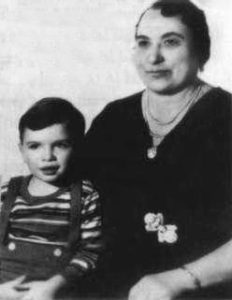
On January 17, 1899, Alphonse Gabriel Capone became the fourth child born into this family, and the second native American. Including the two born in Italy, the Capone family later consisted of nine children, eight surviving into adulthood. Al’s father was a barber by trade, eventually moving the family to a better home that also contained his shop. His father, unlike his mother, was literate and spoke English. Although relatively poor, the Capones seemed like just another ordinary, hard working couple putting their children through school and looking to make their way in the new world. There was nothing to indicate mental instability or dysfunction that eventually produced a remarkably anti-social progeny.
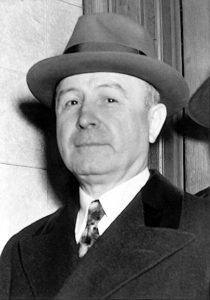
From a young age, Donato “Johnny” Torrio was focused on organizing criminal activities involving gambling and loan sharking that he operated from behind a legitimate business, a neighborhood pool hall. Although not flamboyant, Torrio, born in Montepeloso, Italy, was a sharp operator who allied himself with Manhattan’s Five Points Gang and quickly began to branch out into more malevolent criminal activity involving prostitution, extortion and even narcotics. Torrio also kept a close eye on the neighborhood, always eager to find teenagers that he could depend on to run errands and generally handle tasks without asking too many questions.
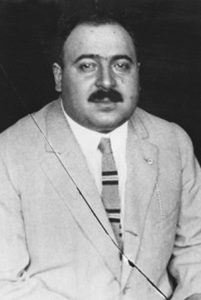
This change was prompted by Johnny Torrio, by now himself relocated to Chicago and the brains behind the racketeering organization operated by James (Big Jim) Colosimo, a rags to riches gangster and restaurateur, who covertly ran a huge vice operation that dealt especially in brothels and prostitution. His Colosimo’s Café was one of the most popular and opulent restaurants in the city and Colosimo, sporting diamonds, wearing a white suit, tall and certainly carrying more than a few extra pounds was a literally larger than life figure. Torrio was the perfectly reserved and concealed manager who paid attention to day to day operations while Colosimo spent most of his time partying and taking advantage of his proximity to a large stable of obliging females.
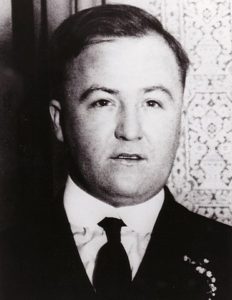
Warned by his gang buddies to stop provoking Torrio, O’Banion famously responded, “To hell with the Sicilians,” evincing a bravado that was recklessly foolhardy. Because, O’Banion was a heavyweight gangland figure with strong connections, the Outfit tread carefully but methodically forward. O’Banion also had a lucrative florist business that focused especially on the elaborate floral designs necessitated by any number of gangland deaths in Chicago. The shop was directly across from the Holy Name Cathedral, an immense downtown Chicago Catholic church and location that generated even more business. O’Banion actually supervised the business personally and was usually on the premises. On November 10, 1924, three men entered the store, ostensibly to pick up a sizable order. Exactly who these men were has always been the subject of rumor, but the best guess revolves around Frankie Yale, who O’Banion would not have suspected and two other men, John Scalise and Albert Anselmi, two individuals who eventually became the most feared hitmen in the Outfit but at that time were unknown, recent emigres from Sicily. While Frankie Yale firmly shook hands with O’Banion, both Scalise and Anselmi shot him in the chest, throat and a final coup de grace to the head. Other employees in the rear of the store fled out of the back door. O’Banion’s funeral was as lavish as any Chicago had ever seen, the funeral procession to the cemetery a mile long. Capone and Torrio and many other enemies were in attendance, for them the occasion as much of a celebration as anything else. They presumed that O’Banion’s north side territory would now be there’s to keep.
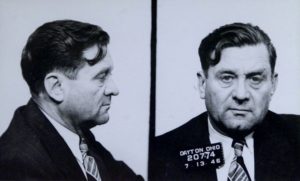
Although Bugs Moran escaped injury, his gang was essentially neutralized and in the early thirties he left Chicago altogether. He resumed his life as a petty criminal, engaging in crimes involving forgery and bank robbery. Once one of the wealthiest criminals in Chicago, he died penniless, of cancer in 1957, in Leavenworth Prison, while serving a ten year sentence for bank robbery, and is buried in the prison cemetery in an unmarked grave.

Ironically purchased while he was on an extended visit to Colorado, Dean O’Banion was the first Chicago criminal to recognize the potential of the Thompson submachine in conducting gang warfare. The gun was invented in 1916, the result of the First World War, but it never really caught on and subsequent peacetime efforts to sell the weapon to police departments were met with failure. But the relatively light weight automatic that could fire numerous bullets from a round drum was perfect for shooting up buildings and automobiles, accuracy no longer necessary for the rapid fire of dozens of bullets sprayed in the general direction of a target. Although O’Banion didn’t live long enough to ever use the gun itself, in January of 1925, Weiss, Drucci and Moran did use a submachine gun in an attempt to kill Al Capone. The gangster traveled around Chicago in a large recognizable Cadillac, figuring his bodyguards would handle any typical attack. This particular attempt failed, the parked limousine sized car containing only Capone’s chauffeur and his bodyguards, Al safely inside a nearby restaurant. But the incident impressed the Outfit enough to secure their own Thompsons, a development that eventually became relevant to Hymie Weiss in a major way.

Al Capone made himself highly visible in Miami before and after St. Valentine’s Day, commenting when he heard Bugs Moran’s accusation that actually only Moran killed like that. Although Jack McGurn was eventually arrested for the crime, he was released for lack of evidence, McGurn having carefully and also visibly checked into a hotel with his attractive girlfriend, Louise Rolfe. Known thereafter as the “Blonde Alibi,” Rolfe and McGurn eventually got married so that she could never be forced to testify against her husband. Although several witnesses were able to identify Fred Killer Burke, he was already a fugitive and eluded police by fleeing to a rural part of Missouri. No one was ever prosecuted for the St. Valentines Day Massacre.
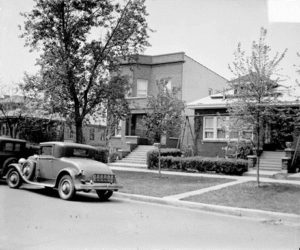
By mid-1922, Al Capone was earning enough money to move his wife, son, widowed mother and even some of his still teenaged siblings to Chicago. He installed these members of the Capone clan in a South Side suburban house, far from the areas in Chicago that generated his income. While he occasionally holed up elsewhere, he would own this home for the rest of his time as a Chicago resident. And initially, Al’s life in Chicago in the early twenties was relatively peaceful, with the various criminal factions respecting each other’s territories, assuming that there was a big enough racketeering pie for everybody to prosper.
Podcast: Play in new window | Download
Subscribe: RSS
